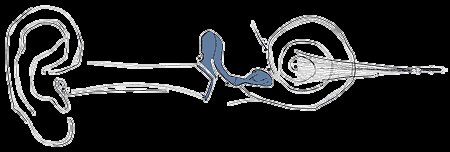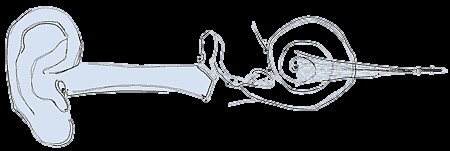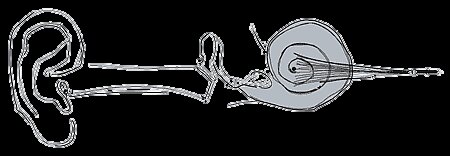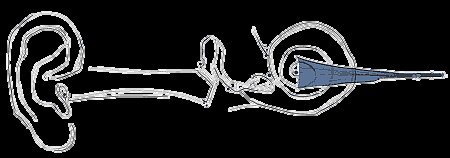The larynx protects the airways from "swallowing" food and contains the vocal cords, whose variation of tension and width is essential for voice formation. Inflammations, muscular dysfunctions, paralysis, nodules, polyps but also tumours of the vocal cords lead to hoarseness. Smokers in particular are at risk.
However, such processes can be treated well with the help of microscopically assisted interventions. The windpipe carries the air we breathe further to the lungs. Narrow spots such as tracheal stenosis in this area cause breathing difficulties. Although these are rare, they can be surgically treated in our clinic.
Our range of treatment also includes the surgical removal of malignant tumours in the head and neck area, from minimally invasive techniques and laser-assisted operations to highly complex surgical procedures in the neck area.
The space within the teeth is called the oral cavity. This is where the food is crushed and saliva is added. Via the pharynx, the food is transported past the larynx into the oesophagus. The palatine tonsils are located in the transition between the oral cavity and the gullet. Their task is to bring the immune system of the child in contact with the "outside world".
Bacterial inflammation of the tonsils constricts the food passage and leads to severe pain when swallowing (angina). The administration of antibiotics is beneficial. Surgical removal of recurrently inflamed palatine tonsils may become necessary, but should only be used as a last resort.
The ear, lower jaw and sublingual parotid glands are located in the head neck area. These already contribute to digestion in the oral cavity. Swelling and inflammation of these glands can often be attributed to calcium deposits, so-called salivary stones. Salivary stones can be removed endoscopically or surgically through the excretory duct of the affected gland. In the case of long-standing complaints or if the location of the salivary stone is unfavourable, it may be necessary to remove the associated salivary gland.
In addition, both benign and malignant tumours can occur in the salivary gland. The parotistum, i.e. a tumour of the parotid gland, is quite common. Our range of treatments includes the surgical removal of salivary gland tumours. Nowadays, this is usually carried out as so-called extracapsular dissection and should not be carried out without continuous monitoring with a neuromonitor to protect the facial nerve.
The nose contains the nasal vestibule, the main nasal cavity, the nasal septum and the nasal conchae. The nose is the upper and outer part of the airways. It has the task of humidifying and warming the cold air we breathe. It is also the seat of the olfactory organ. Curvature of the nasal septum or excessively large nasal conchae can hinder breathing, resulting in dry mouth in the morning, snoring and pharyngitis. Surgery such as correction of the nasal septum, the so-called septoplasty, or reduction of the size of the nasal conchae, for example as a radiofrequency turbinoplasty, can help here.
The outer nose is formed by the root of the nose, the bridge of the nose, the nostrils and the tip of the nose. It is a central part of the face and thus determines the appearance of a person to a large extent. There are many forms that deviate from the norm, such as a hump nose, saddle nose or crooked nose. If there is a desire to change a nose that is disturbing in shape and size, there are various surgical techniques (septorhinoplasty) that make this possible.
The maxillary sinus, sphenoidal sinus, frontal sinus and ethmoid cells are air-filled cavities that are connected to the main nasal cavity. If swelling of the nasal mucous membrane occurs during a cold or due to allergies, the openings of the paranasal sinuses can be relocated. This can lead to the accumulation of secretions and bacterial infection of one or more paranasal sinuses. This is known as sinusitis or acute or chronic sinusitis.
The treatment options are wide ranging, with the use of mucolytics, decongestant nasal sprays, antibiotics or endoscopic surgery. Testing for allergies should not be forgotten in these cases either. If the patient is predisposed to this, a chronic infection can lead to the development of nasal polyps. In these cases, the therapy can be supported by corticoids.
Operations of the paranasal sinuses, often called FESS (functional endoscopic sinus surgery), are one of our specialties. They are performed in our clinic as standard with the support of a navigation system.

Representation of the middle ear
The middle ear consists of the eardrum and the ossicles (hammer, anvil, stirrup). The latter are located in the tympanic cavity, which is ventilated via the nose. In the middle ear, the sound waves in the air are converted so that they cause a travelling wave in the inner ear fluid behind it.
If the middle ear is not sufficiently ventilated, e.g. as a result of swelling of the nasal mucous membranes, secretions accumulate in the middle ear and this causes a reduction in hearing. This condition is very common in small children. As children learn to speak at this age, hearing loss soon becomes noticeable through blurred speech.
If the secretion in the middle ear becomes infected, this is called acute middle ear infection. This condition often develops within a few hours and is extremely painful. Recurring chronic infections of the middle ear can lead to a permanent hole in the eardrum and persistent hearing loss. Closing the hole in the eardrum and replacing the ossicles are nowadays minor operations with a high success rate.
About 1% of the population is affected by bony reconstruction of the stapes and the inner ear (otosclerosis), resulting in hearing loss. In these cases, replacing the stapes with an artificial ossicle is a very successful and less stressful operation.

The auricle and auditory canal have the task of conducting sound waves to the eardrum.
A frequent malformation is the protruding ear. The surgical correction is usually carried out on the child before he or she starts school. Although this does not lead to an improvement in hearing, the children concerned can be spared the mental burden of teasing. In adults, intensive sunlight on the auricle can lead to the development of predominantly malignant skin tumours. As these are clearly visible, they are detected early and the chances of healing are excellent.
Many people suffer from recurring blockage of the auditory canal due to secretion from the skin appendages (cerumen). The only solution to this problem is regular, proper cleaning by the ENT specialist. Inflammation of the skin of the auditory canal, e.g. after bathing, is another common disease of the auditory canal.

Representation of the inner ear
The inner ear (cochlea) consists of a liquid-filled tube that is coiled up in the shape of a snail. Here the sound is converted into an electrical signal for the auditory nerve. In adults, damage to the inner ear is by far the most common cause of hearing loss or even deafness. If this damage occurs suddenly, it is called sudden deafness. If it increases slowly and gradually, it is called chronic sensorineural hearing loss. Drug treatment of sensorineural hearing loss is currently the subject of intensive research (see Clinical trials). Hearing aids or cochlear implants (artificial inner ear) are currently the most commonly used to improve hearing. Currently, about 10% of people are hard of hearing. As society ages, this proportion of the population will rise to more than 20% in 2050.

The auditory pathway is made up of nerve cells that transmit the auditory impression from the inner ear to the superior centres of the auditory cortex in the cerebrum.
Nearly everyone perceives a ringing in the ears, at least at times. This perception can be harmless; in extreme cases, however, a patient can be so disturbed by a ringing in the ears (tinnitus) that he or she can no longer lead a normal life. The presumed cause of such tinnitus is the excessive release of messenger substances in the auditory pathway. Until now, a wide variety of strategies have been used to accustom the patient to his or her ringing in the ears. These range from noise generators (noisers) to psychotherapy. Treatments that aim to reduce the noise in the ear or even make it disappear completely are currently undergoing clinical trials (see Clinical Trials).
